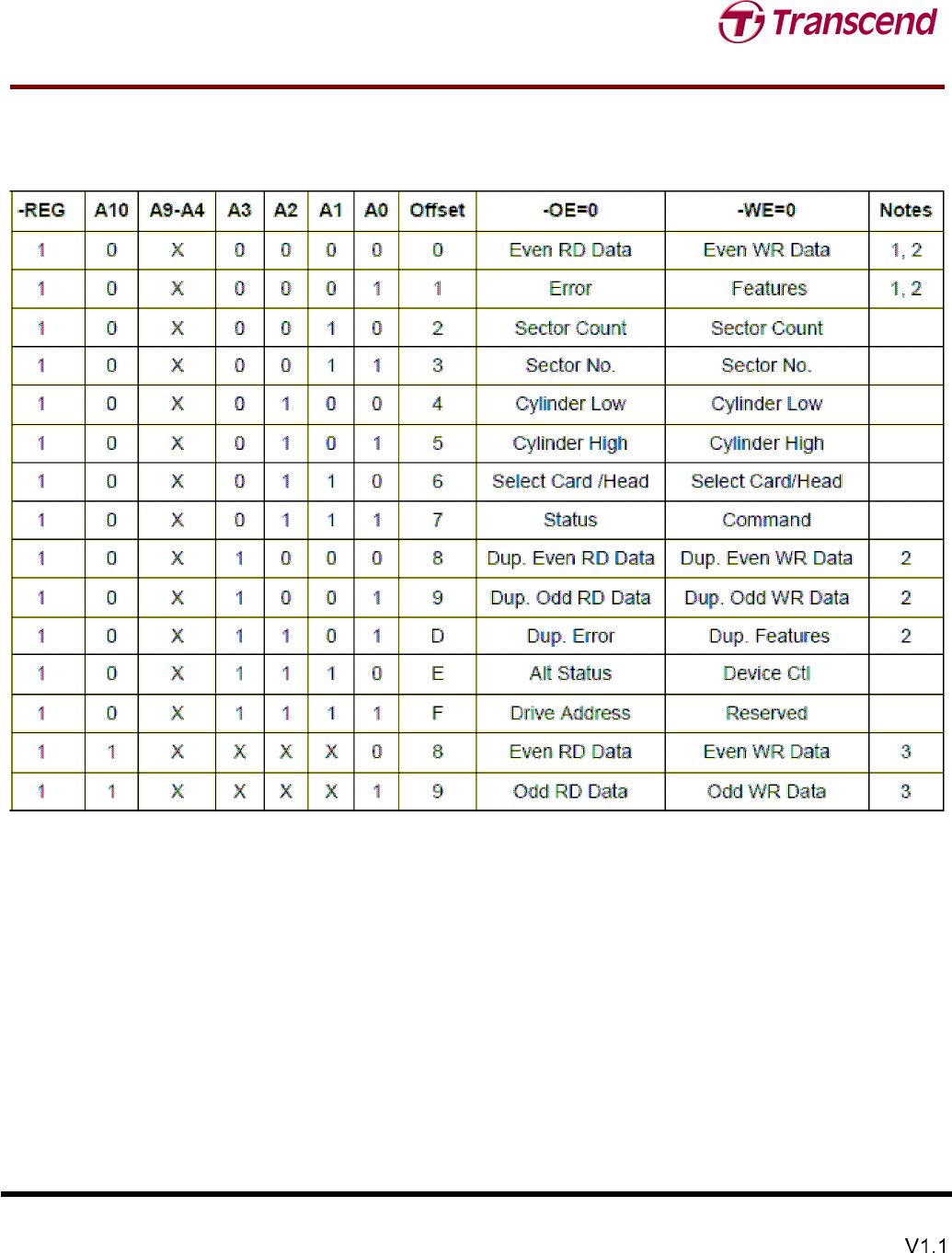
T
T
T
S
S
S
3
3
3
2
2
2
M
M
M
~
~
~
1
1
1
G
G
G
C
C
C
F
F
F
8
8
8
0
0
0
80X CompactFlash Card
Transcend Information Inc.
38
5.3 Memory Mapped Addressing
When the CompactFlash Storage Card registers are accessed via memory references, the registers appear in the
common memory space window: 0-2K bytes as follows:
Notes:
1) Register 0 is accessed with -CE1 low and -CE2 low as a word register on the combined Odd Data Bus and Even Data Bus (D15-D0).
This register may also be accessed by a pair of byte accesses to the offset 0 with -CE1 low and -CE2 high. Note that the address
space of this word register overlaps the address space of the Error and Feature byte-wide registers that lie at offset 1. When
accessed twice as byte register with -CE1 low, the first byte to be accessed is the even byte of the word and the second byte
accessed is the odd byte of the equivalent word access.
A byte access to address 0 with -CE1 high and -CE2 low accesses the error (read) or feature (write) register.
2) Registers at offset 8, 9 and D are non-overlapping duplicates of the registers at offset 0 and 1.Register 8 is equivalent to register 0,
while register 9 accesses the odd byte. Therefore, if the registers are byte accessed in the order 9 then 8 the data shall be
transferred odd byte then even byte.
Repeated byte accesses to register 8 or 0 shall access consecutive (even then odd) bytes from the data buffer. Repeated word
accesses to register 8, 9 or 0 shall access consecutive words from the data buffer. Repeated byte accesses to register 9 are not
supported. However, repeated alternating byte accesses to registers 8 then 9 shall access consecutive (even then odd) bytes from
the data buffer. Byte accesses to register 9 access only the odd byte of the data.
3) Accesses to even addresses between 400h and 7FFh access register 8. Accesses to odd addresses between 400h and 7FFh
access register 9. This 1 Kbyte memory window to the data register is provided so that hosts can perform memory to memory block
moves to the data register when the register lies in memory space.


















